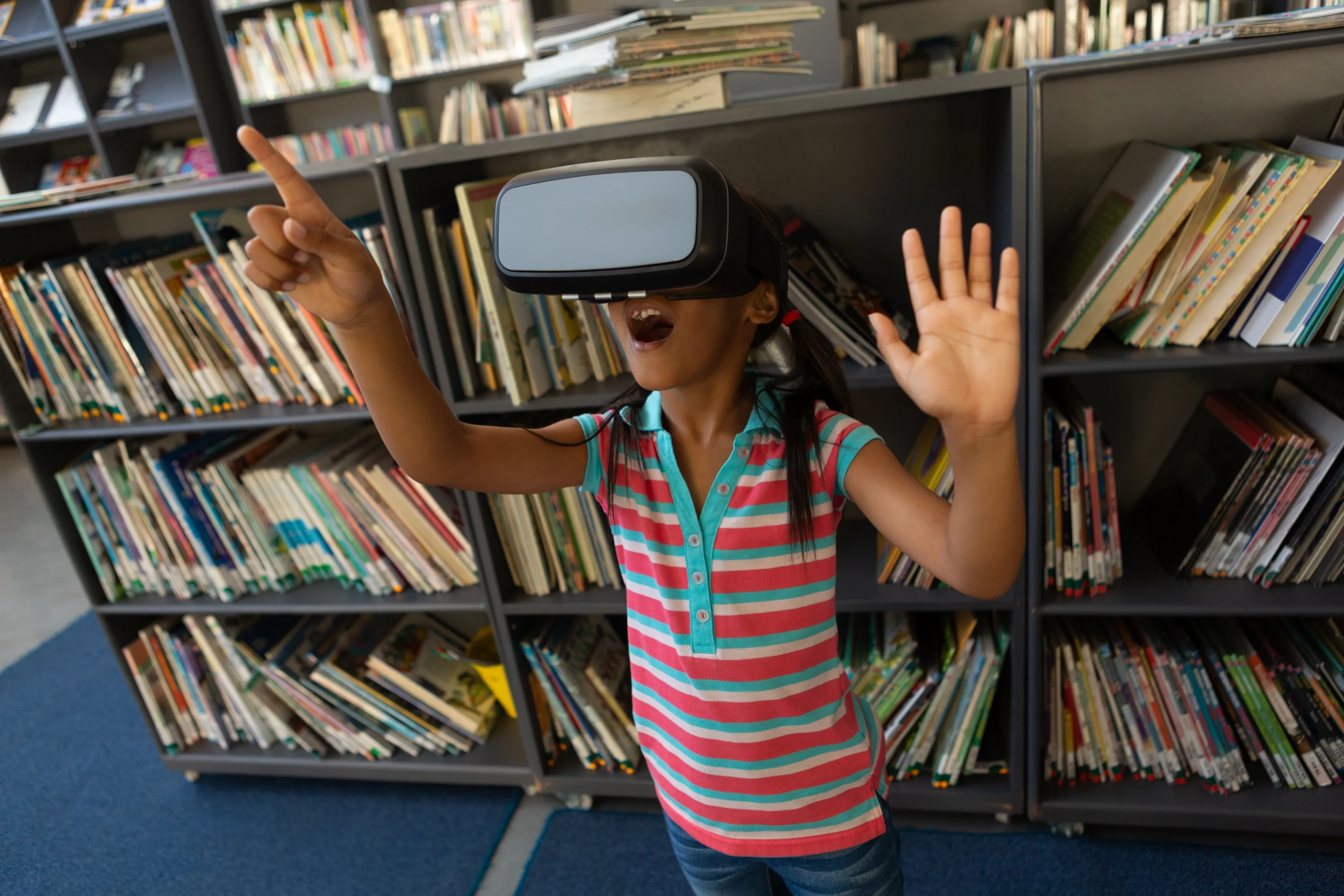Listen to a discussion about this blog
by VOISS / iKnow | Created Using NotebookLM
Engagement is a golden ticket in education, the magic ingredient that turns learning into an active process for the student. Also referenced as students’ level of motivation, engagement is frequently described as an area of need by those surrounding a student. It’s an issue that has seemingly been exponentially worse in the world students live in post-COVID-19 pandemic. Countless educators, parents, and other professionals have mentioned the need to further engage today’s learners, offering concern about the lack of student engagement or motivation in today’s classrooms. For students with disabilities, being engaged or motivated can be an uphill battle, especially when social or communication challenges arise. For many of these learners, engagement in one’s learning is often an attribute of their disability and, thus, serves as a barrier to their learning. That’s where VOISS steps in: creating immersive and interactive experiences that can make students forget they’re learning.
Why VR is a Game-Changer for Engagement
Motivating students often means meeting them where they are, with tools and experiences they find exciting and accessible. VR delivers on this promise in several ways:
- Immersive Learning Environments: Students practice social skills in lifelike scenarios, from navigating the school cafeteria to resolving conflicts in the hallway. The sense of “being there” sparks curiosity and attention.
- Active Participation: Unlike passive learning methods, VR engages students as active participants, allowing them to make choices, solve problems, and see the impact of their decisions in real time.
- Immediate Feedback: Students receive direct, actionable feedback on their behavior in VR, making the learning process both dynamic and rewarding.
This aligns with research by Carreon et al., which highlights the value of technology in fostering active, hands-on learning. By creating meaningful connections between the learner and their environment, tools like VOISS tap into students’ intrinsic motivation to improve.

Engagement Strategies Built Into VOISS
VOISS doesn’t just use VR for novelty—it’s carefully designed to motivate and sustain engagement through:
- Gamified Learning: Students earn points, receive visual rewards, and celebrate achievements within the VR environment.
- Personalized Scenarios: Teachers can tailor scenarios to align with a student’s interests or strengths, turning a simple practice session into a personally meaningful experience.
- Special Interests Integration: For students with autism, incorporating their special interests into VR lessons boosts motivation and encourages participation.
Building on principles discussed in Carreon et al., VOISS integrates personalized features that make learning feel relevant and achievable. The incorporation of gamification and interest-based scenarios aligns with evidence that students engage more effectively when tasks resonate with their personal preferences. Combine that with the use of other evidence-based practices provided through more traditional means, and it is a better recipe for success in motivation than those methods alone.
From Engagement to Mastery
Engagement isn’t just about keeping students entertained—it’s about unlocking their potential. Here’s how VOISS leverages motivation to drive deeper learning:
- Reinforcing Effort Over Outcomes: Students learn that persistence and practice matter. They may fail in one VR scenario, but with encouragement and immediate feedback, they’re motivated to try again.
- Building Self-Efficacy: As students succeed in increasingly complex scenarios, they develop confidence in their ability to apply skills in the real world.
- Supporting Generalization: By practicing in multiple settings within the VR platform, students are better equipped to transfer their learning to the physical world.
Carreon et al. emphasize the importance of tools that help learners bridge the gap between isolated skills and real-world applications. VOISS does this by scaffolding skills in VR environments that mirror real-life situations, ensuring students are prepared to thrive outside the classroom.

The Joy of Learning: A Hypothetical Student Success Story
Consider a hypothetical fifth grader, Lily, who struggles with anxiety during social interactions. Using VOISS, her teacher designs a series of VR scenarios tailored to her needs. The progression starts with basic introductions in a simulated classroom and advances to more complex interactions, such as collaborating on a group project.
In these scenarios:
- Lily practices at her own pace, receiving immediate, encouraging feedback.
- Gamified elements, such as seeing her progress indicated through successful interactions, keep her motivated and engaged.
- As Lily repeats these exercises, her confidence grows, and she begins to generalize these skills beyond the VR environment. She now interacts more comfortably with peers during recess and group activities.
This example illustrates how VR can scaffold learning, allowing students to practice in a low-risk, engaging environment. While hypothetical, it mirrors the outcomes described by Carreon et al., who emphasize the importance of personalized, technology-driven interventions in overcoming social-emotional challenges.
Engagement is the First Step
VOISS’s VR technology engages students and inspires them to push their boundaries, practice new skills, and see learning as an adventure. When learning feels meaningful and fun, students of all abilities can rise to the challenge.
Stay tuned for the final post in the series, where we’ll explore Generalization Tactics and how VOISS helps students apply learned skills in real-world settings.

